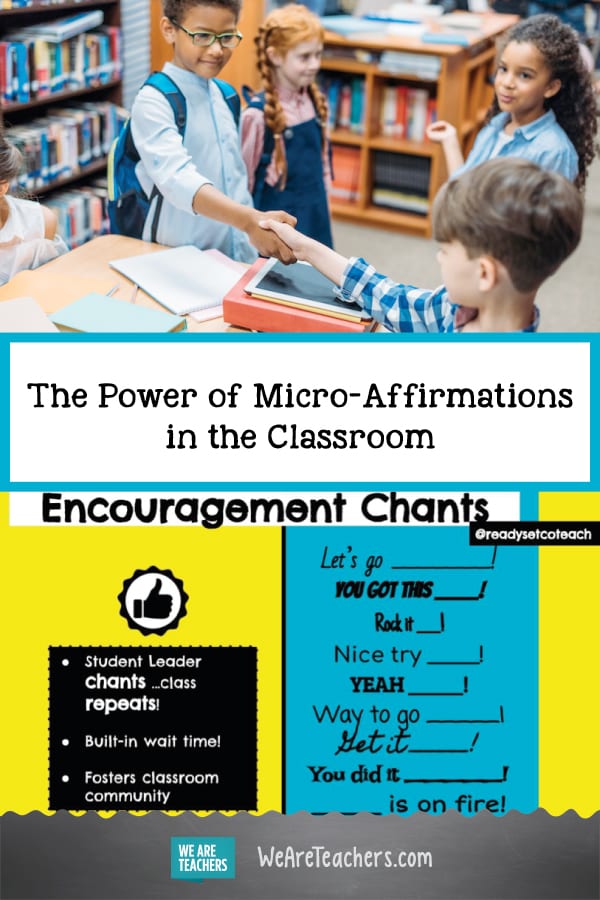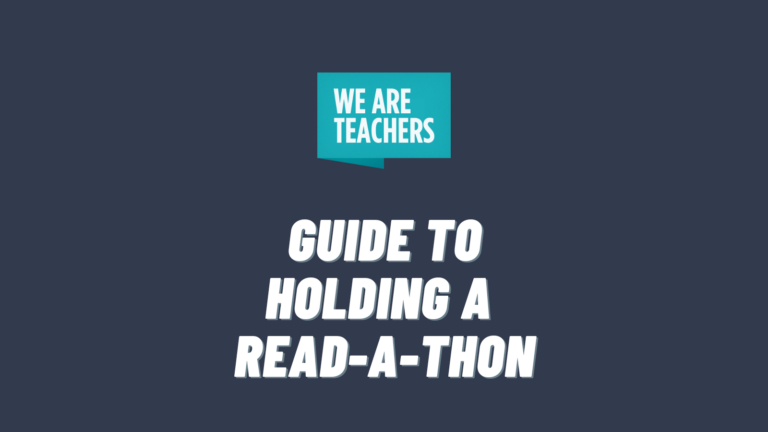You may have heard of micro-aggressions, but what are micro-affirmations?
These small, welcoming acts accentuate the positive, provide encouragement, and foster healthy relationships. Even the smallest interactions can have a BIG impact on classroom culture, and we all want to build a classroom environment where student expression, participation, and achievement are the primary goals of the school day.
Micro-affirmations create an environment where students feel comfortable sharing ideas, know that they are valued, and are excited to contribute. These small acts focus on teaching to the whole child—not just providing what is needed academically but also meeting their social and emotional needs.
When teachers use micro-affirmations, they are modeling how to care for their peers’ feelings. Allophilia, as coined by Todd Pittinsky, is accepting and loving others who are not like you. Rejecting prejudice and, instead, developing a classroom where differences are celebrated and everyone’s contributions are valued can increase student achievement. What’s great is, once established as the norm, micro-affirmations don’t take up any extra time or take much, if any, extra work.
How can I implement micro-affirmations in the classroom?
There are countless ways to embed micro-affirmations into classroom culture. Here are just a few examples of the micro-affirmations that we have integrated into our everyday classroom routines:
Greetings
Greet your students at the door every morning and intentionally create opportunities for students to greet each other daily. When a student is absent, be sure to point out that you noticed their absence and missed them.
Encouragement

Students can lead quick encouraging and supportive chants for their peers each time a student is speaking or presenting. Try having students say, “You got this (name)!” or “Rock it (name)!” This practice also provides built-in wait time for those students who need it.
Inclusive Language
Instead of talking about parents, try using the term families. Also, refer to the class as your school family. Instead of saying “my” classroom and “my” supplies, try saying “our” classroom and “our” supplies to promote inclusion as well student ownership of their classroom and learning environment.
[See 50 ways to be more inclusive in your teaching here.]
Names
Refer to students by name and make sure to pronounce them correctly! Encourage students to use their peers’ name within classroom discussions. To take it a step further, try coming up with fun nicknames like Brian the Brain or Lenny Spaghetti.
[contextly_auto_sidebar]
Compliments
Positivity is contagious. Receiving a compliment makes a person more likely to give a compliment in return. Complimenting a student can, in turn, lead to students complimenting or congratulating each other without being prompted. Try to keep the compliments focused on growth. For example, instead of saying “you’re smart,” try saying “thank you for never giving up,” or “I love how you are always prepared for class.”
[See “Why I leave positive Post-Its for my students every morning.”]
Equity
Calling on the same students all the time is easy to do mistakenly. Keep in mind students notice. Come up with a way to ensure you are asking students to contribute equally. Popsicle sticks with names on them or an online random name picker (try classtools.net/random-name-picker) are just a few options. This will also increase student participation. However, we recommend allowing the “phone a friend” option or giving students a choice so they don’t feel put on the spot or cornered.
Share the Positive
When a student meets a goal, shows growth, displays a favorable character trait, or even just has a great day in general, share the positive! Whether a celebratory note or phone call home, recognizing them in front of their peers, or posting a sticky-note complimenting them on the Shout Out Wall, it can really make a difference in students’ confidence and feelings of belonging.
Here’s a look at some of the ways we incorporate these strategies into our teaching:
How can students use micro-affirmations?
When a student is sharing their work or ideas, their peers can show respect by sitting up straight, making eye-contact, and nodding when spoken to directly. These small gestures build respect and rapport between peers. Students can also make up their own nicknames, give each other compliments, and lead the supportive chants to encourage their peers after they have been modeled. We reward students for treating each other with respect, showing compassion, and encouraging others. It’s great to watch students’ begin to see others success as their own and the class as a family unit.
These are just a few of the plethora of ways teachers can accentuate the positive and encourage students to do the same. Getting to know your students and building positive relationships will do wonders for student growth and classroom culture. Ask yourself: In what small ways can I promote positivity and overcome my own personal bias’ to ensure all students feel respected, valued and included in my classroom every single day?
We’d love to hear—how do you use micro-affirmations in the classroom? Come and share in our WeAreTeachers HELPLINE group on Facebook.


